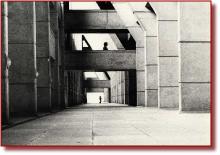![]()
![]()
![]()
![]()
![]()
![]()
![]()
![]()
![]()
![]()
![]()
![]()
![]()
![]()
![]()
![]()
![]()
![]()
![]()
![]()
![]()
![]()
![]()
![]()
![]()
![]()
![]()
![]()
![]()
![]()
![]()
![]()
![]()
![]()
![]()
![]()
![]()
![]()
![]()
![]()
IMPORTANT: No material may be reproduced, copied or redistributed from this site, without the express written consent of doktorjon.co.uk
All the detailed information on this site is provided in good faith; and as such, Doktor Jon does not accept responsibility for any consequential loss, injury or disadvantage resulting from any individual or organisation acting on the details contained herein.
© doktorjon.com 2004 - 2010
![]()

Deploying CCTV in a range of residential property's
First off, let's consider the requirements for keeping an eye on the outside world.
Depending on where you live, quite obviously the bit you need to watch is going to vary in size ... substantially.
Please Note - Doktor Jon is currently upgrading his site, so you may see some layout changes on various pages, whilst the work is in progress.
Hopefully, the complete re-design and improvements, should be completed by early 2010.
Communal Dwellings
If you live in an apartment or flat, ideally you would like there to be a 'block' scheme, so that the main corridors, passageways and entrances are constantly monitored and recorded.
Unless there is a porter or concierge on duty all the time, CCTV cameras should be fixed view, and not remote control. If you already have a CCTV scheme, or are seriously considering installing one, make sure that 'key' camera pictures are made available (perhaps four at a time in a "quad" format) through the aeriel system, so they can be brought up on a spare television channel.
If it's not possible to use the aeriel system, you could consider using very low cost 'wireless' 2.4 GHz transmitters, then each flat can purchase its own small receiver unit, which plugs into the A/V socket on the back of theTelevision. (Domestic grade transmitters cost around £60.00, US$ 70.00, Euro 90.00 and receivers [per flat] cost around £45.00, US$ 55.00, Euro 70.00).
If you want to see the main entrance, car park, or communal areas, you simply change over to that channel, with the remote control. The absolute maximum range (open air) from a good quality video transmitter to a receiver is about 100 metres (310 feet), although indoors this will reduce significantly.
Be aware though, that certainly here in the U.K., on the 2.4GHz band only four channels (frequencies) are legally available for use, and it is possible that someone in the block may already be using this wireless equipment, to transmit pictures from a video or DVD player, inside their own apartment.
Many blocks now have Video Entry Systems installed, which are thought to provide a high level of security.
From experience, Doktor Jon would have to say that given their vulnerability to abuse, this really is only a false sense of security. It would be far preferable to look at using an entry system where the camera is not built into the speaker panel, but rather fitted in a corner (if possible) using an ultra wide angle lens (90+ degrees coverage) to take in the entire area by the entrance door.
Using this technique, it is far more difficult to disable the camera, and in theory if sited correctly, almost impossible for others to hide unseen by the unit.
Depending on the intended location, it may be necessary to use vandal resistant (there really is no such thing as 'vandal proof'!) CCTV cameras, although this much higher level of protection will increase the overall unit cost substantially.
Applying CCTV to use in individual dwellings >>>






